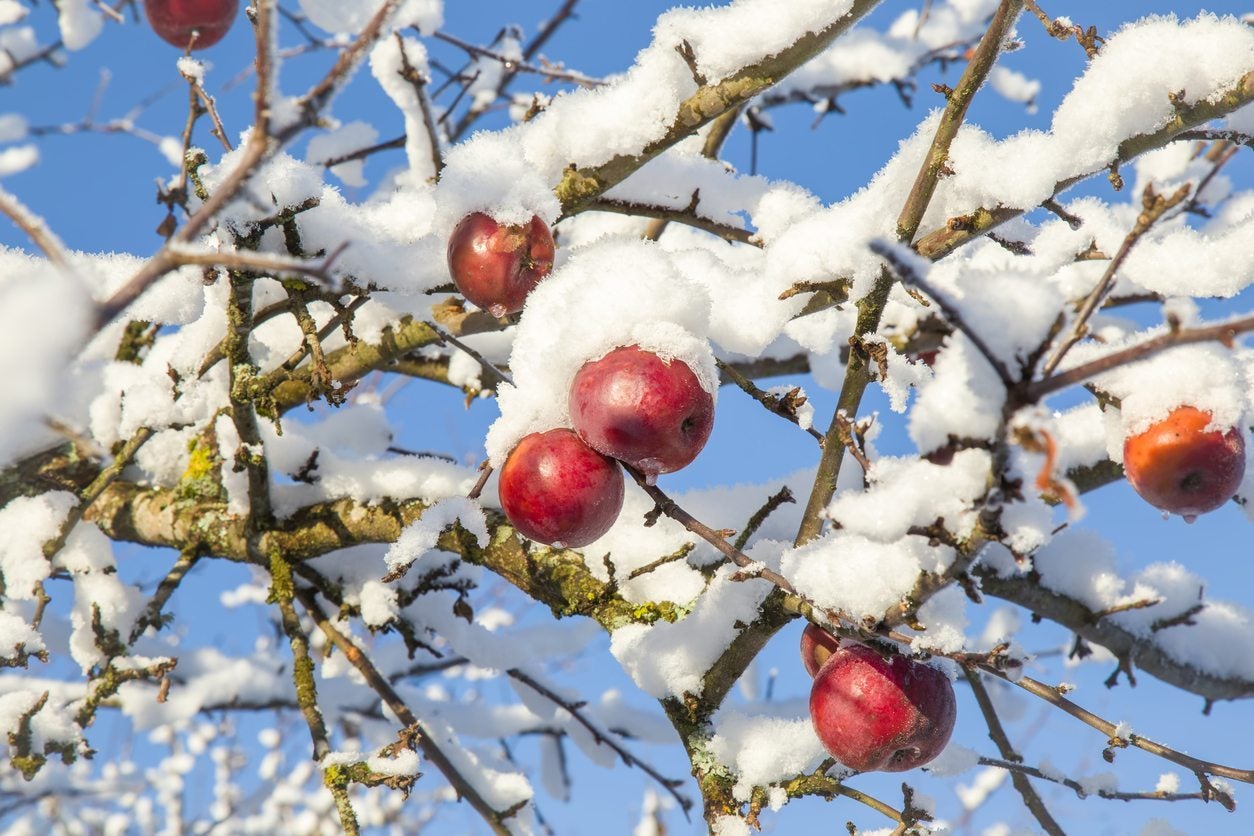Apple Chilling Info: How Many Chill Hours Do Apples Need

If you grow apple trees, then you are no doubt familiar with the chill hours for apple trees. For those of us who are new to cultivating apples, what exactly are apple chill hours? How many chill hours do apples need? Why do apple trees need chilling? It all seems a bit confusing, but the following article contains all the apple chilling info you are likely to need.
Apple Chilling Info
So, you’re immersed in choosing bare root apple trees from a catalogue for your particular USDA zone and notice that not only is the hardiness zone listed but another number as well. In the case of apples, these are the number of apple chill hours needed for the tree. Okay, but what the heck are chill hours for apple trees? Chill hours or chill units (CU) are the number of hours when temperatures stay at 32 to 45 degrees F. (0-7 C.). These chill hours are prompted by longer nights and lower temperatures in the fall and early winter. This period of time is critical for apple trees and is when the hormone responsible for dormancy breaks down. This allows buds to develop into flowers as the weather warms up.
Why Do Apple Trees Need Chilling?
If an apple tree doesn’t get enough chill hours, the flower buds may not open at all or they may open late in the spring. Leaf production may also be delayed. Blossoms may also bloom at irregular intervals and, although this might seem beneficial, the longer the bloom time, the increased likelihood that the tree will be exposed to disease. As you may expect then, a lack of chill hours will affect fruit production as well. So, it is important to not only match your USDA zone with your choice of apple variety but also the chilling hours the tree needs. If you buy, for instance, a low chill tree and you live in a high chill area, the tree will break dormancy too early and be damaged or even die from the cold temperatures.
How Many Chill Hours Do Apples Need?
This really depends on the cultivar. There are over 8,000 apple varieties worldwide and more being introduced annually. Most apple varieties need 500 to 1,000 chill hours or temps below 45 degrees F. (7 C.) but there are some low chill varieties available that need no more than 300 chill hours. Low chill varieties need less than 700 chill hours and can withstand hotter summers than other varieties. Medium chill varieties are apples that need chill hours of between 700 and 1,000 chill hours and high chill apples are those that require more than 1,000 chill hours. Low chill and medium chill apples can generally be grown in high chill regions, but high chill apples will not thrive in low chill climes. Although most apples need high chill hours, there are still plenty of medium to low chill cultivars.
- Fuji, Gala, Imperial Gala, Crispin, and Royal Gala all require chill times of at least 600 hours.
- Pink Lady apples need between 500 and 600 chill hours.
- Mollie’s Delicious requires 450 to 500 chill hours.
- Anna, a golden delicious type of apple, and Ein Shemer, a yellow/green cultivar, tolerate areas with 300 to 400 chill hours.
- A truly low chill apple, Dorsett Golden, found in the Bahamas, requires less than 100 hours.
Gardening tips, videos, info and more delivered right to your inbox!
Sign up for the Gardening Know How newsletter today and receive a free copy of our e-book "How to Grow Delicious Tomatoes".

Amy Grant has been gardening for 30 years and writing for 15. A professional chef and caterer, Amy's area of expertise is culinary gardening.
-
 Types Of Tomatoes Explained: Explore The Many Wonderful Shapes, Colors, Flavors, & Best Uses
Types Of Tomatoes Explained: Explore The Many Wonderful Shapes, Colors, Flavors, & Best UsesThe world of tomato varieties is vast and fascinating. Learn about the key types to grow in your garden, tailored to your preferences and space.
By Amy Grant
-
 Try The Trend – Turn Any Bed Into A Keyhole Garden With This Clever In-Ground Composter
Try The Trend – Turn Any Bed Into A Keyhole Garden With This Clever In-Ground ComposterKeyhole gardening is an efficient and sustainable practice that saves space. Get started on this DIY project quickly and easily with an in-ground composter.
By Bonnie L. Grant